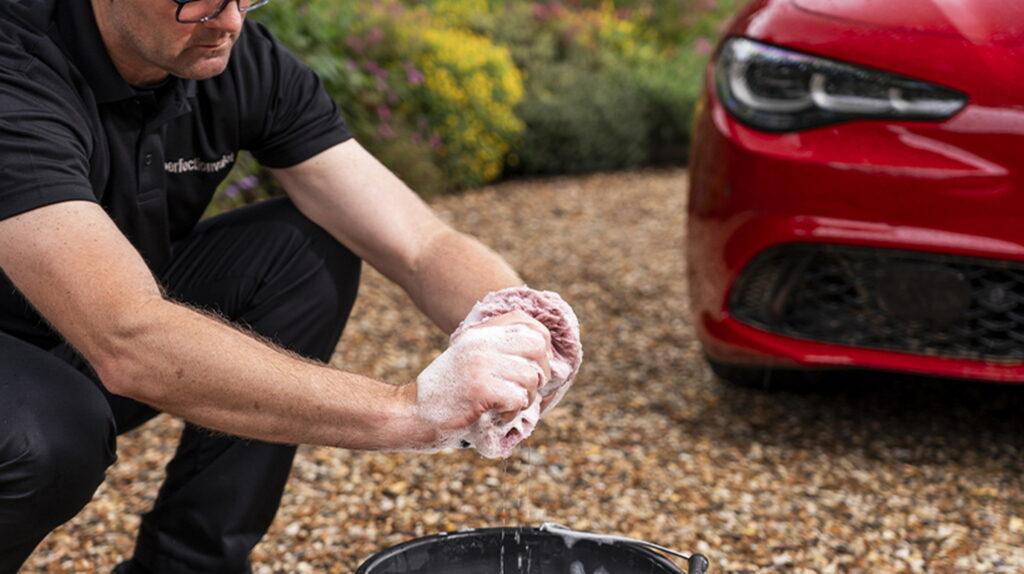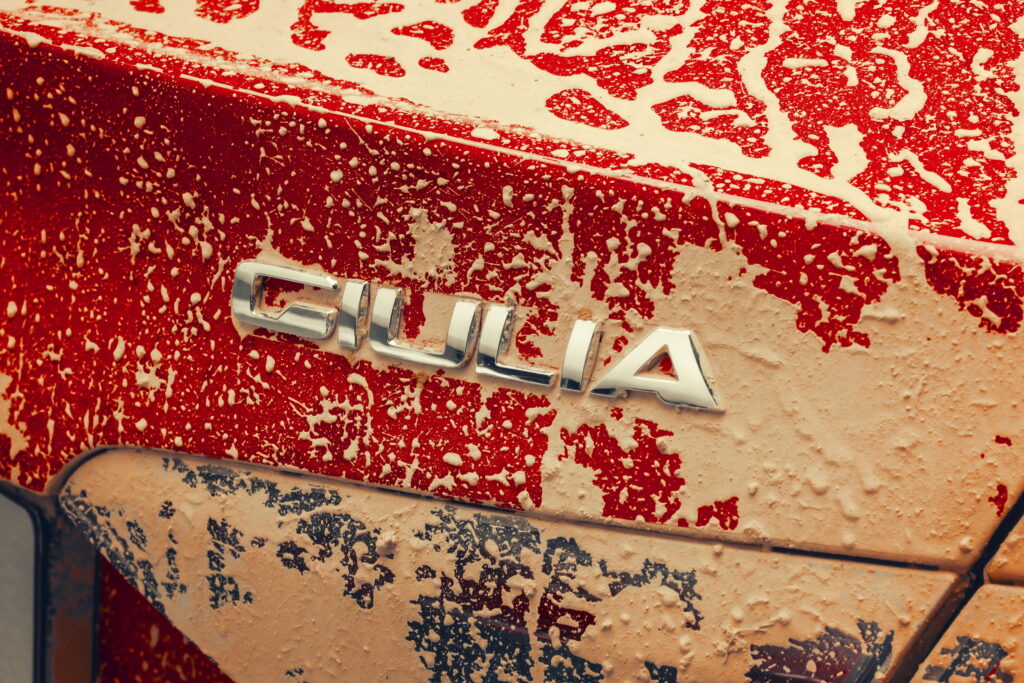- Washing your car at home with a single bucket can save up to 300 gallons of water.
- Commercial car washes recycle water but often damage paint with abrasive brushes.
- Waterless cleaning sprays lift dirt easily while reducing the need for hoses and extra water.
We all love a gleaming car that’s polished, spotless, and practically singing as it cruises down the road. But let’s face it: many of us have the water-wasting habits of a dehydrated camel when it comes to washing our rides. Water is a precious resource that shouldn’t be wasted and spraying hundreds of gallons down the driveway for a car wash makes about as much sense as buying a convertible in Alaska.
The good news? You don’t have to pick between a sparkling ride and a shred of eco-consciousness. Experts have rounded up sustainable car-washing tips that’ll keep your wheels shining without draining the planet or your wallet.
Commercial Car Washes: Friend or Foe?

Let’s start with the most obvious solution for those focused on saving water: commercial car washes. According to the University of Florida (yes, they apparently study this stuff), most commercial setups use 60 percent less water than hosing your car down at home. Their secret? Water recycling systems and specialized equipment. They also use absorption systems to prevent chemical-laden runoff from polluting rivers, lakes, and oceans.
More: Got A C8 Corvette And Only Half A Brain? Here’s How To Detail It According To Chevy
But before declaring car washes the eco-saviors of the automotive world, remember they’re far from perfect. In fact, those spinning brushes can leave scratches or swirl marks, especially on darker and softer paints. Harsh chemicals used in some washes can strip wax or damage trim, and frequent visits add up fast. If your car has low-hanging parts like spoilers, conveyor systems can even cause expensive damage.
Bucket Brigade to the Rescue
So, what if you want to skip commercial car washes but don’t feel like shelling out for a professional detailer, all while preserving the magic of washing your car yourself at home? Surprisingly, it’s entirely possible to clean a car of “average dirtiness” using just a single bucket of water. According to the UK-based Consumer Council for Water, the bucket method uses only 30 liters (7.9 gallons) of water, a dramatic improvement compared to the 300 liters (79.3 gallons) typically wasted when washing a car with a hose.
For some added expertise, Alfa Romeo consulted expert car valeter and detailer Richard Tipper for tips on sustainable car washing. We’ve rounded up his advice and tossed in a few bonus suggestions to keep your car gleaming without wrecking the planet.
1. Start From The Top

The golden rule of washing cars is to start from the roof. While this is usually the cleanest part of the vehicle, the run-off water will help soften the dirt below. More importantly, each clean portion of the vehicle will stay free of muck and dirt as you move further down to the more difficult parts like the wheels.
2. Regularly Rinse The Mitt Or Cloth

When washing your car with a bucket, regularly rinse the mitt or cloth to avoid simply spreading dirt around. Adding a grit guard to the bottom of the bucket helps keep the cloth cleaner by trapping small particles, reducing the risk of damage to your paintwork.
3. Collect And Use Rainwater

This tip largely depends on your location and the quality of rainwater available. In the UK, abundant rainfall is generally safe for car cleaning and can save money on your water bill. Even in the US, collecting and using rainwater for household chores during the summer can save around 4,921 liters (1,300 gallons) of water.
Rainwater may also be a better option than tap water, as it often leaves fewer spot stains, depending on the hardness of your local tap water. However, in some countries, rain dust can pose a challenge, making rainwater less ideal. To mitigate this, use a filter or mesh gauge in your rainwater collection vessel to reduce debris and contaminants. If the water is clean and the weather is mild, you could even turn washing your car in the rain into a fun outdoor activity for the kids, enjoying a nearly unlimited supply of water.
4. Use PH Neutral Soap

A few capfuls of biodegradable, pH-neutral soap in your bucket can benefit both your car and the environment. Unlike regular soaps, it doesn’t leave harmful chemical residues, so there’s no need to worry about contaminating drains. Additionally, its pH-neutral formula is gentler on paintwork, making it an excellent choice for classic cars. According to the University of Florida, it’s always best to opt for water-based, recyclable, and phosphate-free soaps for an eco-friendlier clean.
5. Explore Waterless Options

Another way to save water is by using waterless cleaning products. These solutions work by softening dirt and lifting it from the car’s surface, making it easy to wipe away with a plush microfiber cloth. Opt for cleaners with plant-based ingredients whenever possible—they’re gentler on the environment while still delivering effective results.
6. Steam Clean Your Car

If you’re willing to invest in a specialized steam cleaner, you can save significant amounts of water while effectively removing ingrained dirt, especially from older vehicles. Since water expands 1,700 times when converted to steam, only a small amount is needed. However, before diving in, it’s important to research proper steam-cleaning techniques to avoid potential damage and achieve the best results, so don’t try this at home before educating yourself.
7. Check For Any Leaks, Switch Off When Possible

Using a hosepipe is the least water-efficient method for cleaning a car, but if it’s your only option, there are ways to minimize waste. First, ensure your tap is leak-free, fixing even a small leak can lead to significant water savings. Additionally, use a spray gun with a trigger, as it reduces runoff and is far more effective at targeting and removing dirt.
More: What’s The Worst Vehicle To Clean And Keep Clean?
As we know from brushing our teeth or shaving in the sink, it is important to switch off the water supply as often as possible, in order to avoid wasting our precious clean water supplies.
8. Choose The Right Time And Check The Weather

We’ve all experienced the frustration of washing a car only for it to rain shortly after. Checking the weather forecast beforehand can save you time, effort, and money by helping you plan better. Additionally, aim to wash your car on mild days. Hot, sunny weather causes water to evaporate quickly, often leaving streaks or marks that require extra effort to clean.
9. Wash Your Car Less Often

The last tip doesn’t come from car wash owners or detailing experts, but it is the most obvious thing to do when your goal is to preserve water. Washing your car less often doesn’t necessarily mean you’ll be driving around in a filthy vehicle, as there are a few things that could prevent it from losing its shine.
Avoid parking under trees or overhead wires to keep your car free from bird droppings. Another smart tip is to drive slowly and keep your wheels straight when going over puddles, reducing the chance of dirty water splashing onto the bodywork. Lastly, clean cars are easier to maintain when stored in enclosed parking spaces or protected with a car cover.
A Smarter Way to Wash: The Two-Bucket Rinsless Method

Another method to wash your car, one not mentioned by Alfa Romeo but a favorite among the team here at Carscoops, is the two-bucket rinsless method. This tried-and-true technique can achieve a spotless finish while conserving water and safeguarding your car’s paint. One bucket is designated for soapy water, while the other holds clean water for rinsing your mitt or cloth. This simple setup prevents dirt from being transferred back onto the car, reducing the risk of scratches or swirl marks.
When combined with rinsless cleaning solutions, the process becomes even more water-efficient. Unlike traditional washing, it eliminates the need for a hose or extensive rinsing. A rinseless solution is mixed into a bucket of water to create a cleaning solution that encapsulates dirt, lifting it away from the car’s surface. Using a microfiber cloth or mitt dipped in the solution, you wipe the car clean section by section, then dry immediately with a separate microfiber cloth to prevent streaks. This method is perfect for lightly to moderately dirty vehicles, saving significant water while still achieving a polished, professional finish.
Waterless Spray Cleaning for Lightly Soiled Cars

For an even more eco-friendly alternative, consider waterless cleaning products that provide an efficient and effective solution. These sprays are designed to soften and lift light dirt, making it easy to wipe away with a microfiber cloth—no water needed. Many of these products are plant-based, offering an environmentally safer option while remaining tough on grime.
Waterless cleaning is best suited for lightly soiled vehicles and works perfectly for quick touch-ups or preserving your car’s shine between more intensive washes. By incorporating this method into your routine alongside traditional techniques, you can keep your car looking immaculate without compromising your commitment to environmental responsibility.
The Dirty Truth About Keeping Cars Clean
Alfa Romeo tries to prove a point with one of the most mud-covered Giulia Veloce sedans we’ve encountered, yet it still manages to look good. Of course, a clean car is always better, but these tips demonstrate how you can achieve that shine while conserving water and protecting the environment.
A study from Alfa Romeo UK suggests that 40 percent of local drivers feel embarrassed driving a dirty car, while only 19 percent remain unfazed. Naturally, these figures may vary depending on location and demographics, but the message is clear: many take pride in keeping their cars clean.
More: Study Says Cars Are Dirtier Than The Average Toilet
The same study also indicates that 32 percent of UK drivers wash their cars more than once a month, with 14 percent doing so at least weekly. The most common method is a bucket of soapy water followed by a hose rinse (51 percent), trailed by tunnel car washes (29 percent) and self-service options (21 percent). Surprisingly, only 8 percent of respondents cited environmental concerns as the main factor influencing their choice of car-washing method.
Hopefully, with these tips and the promise of future advancements in car wash technology, we can look forward to a future where clean cars go hand-in-hand with eco-conscious practices.




























